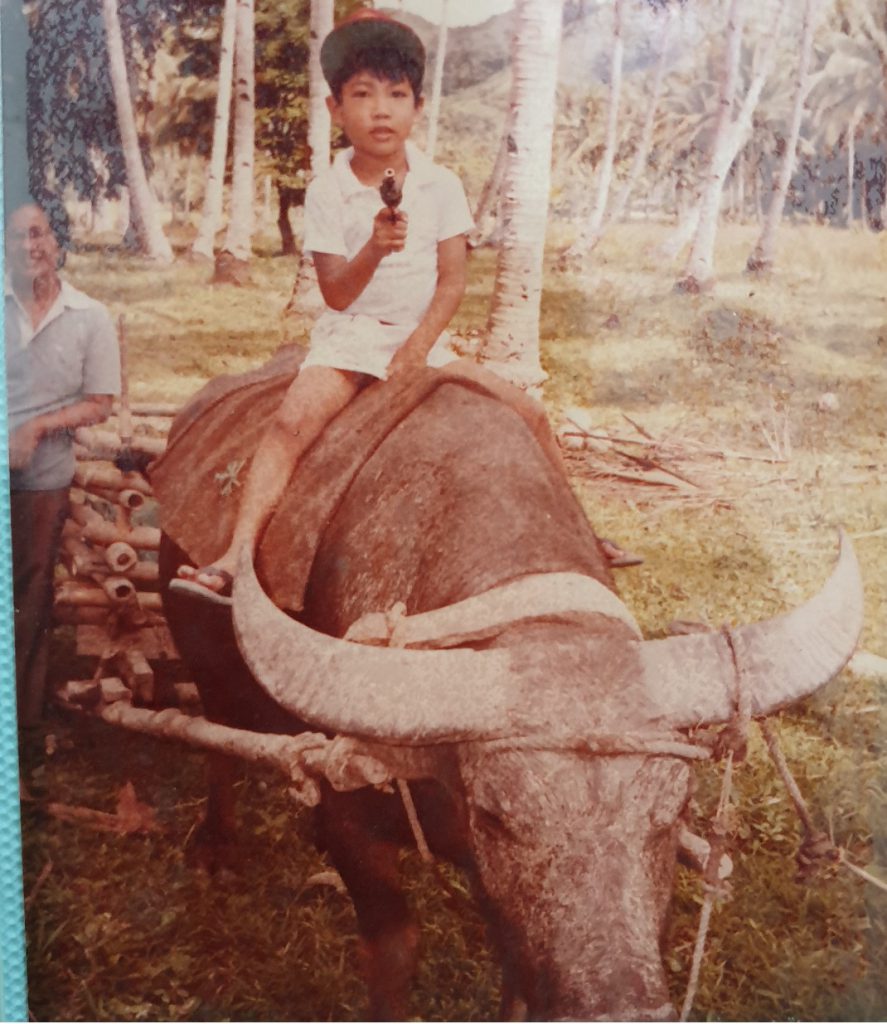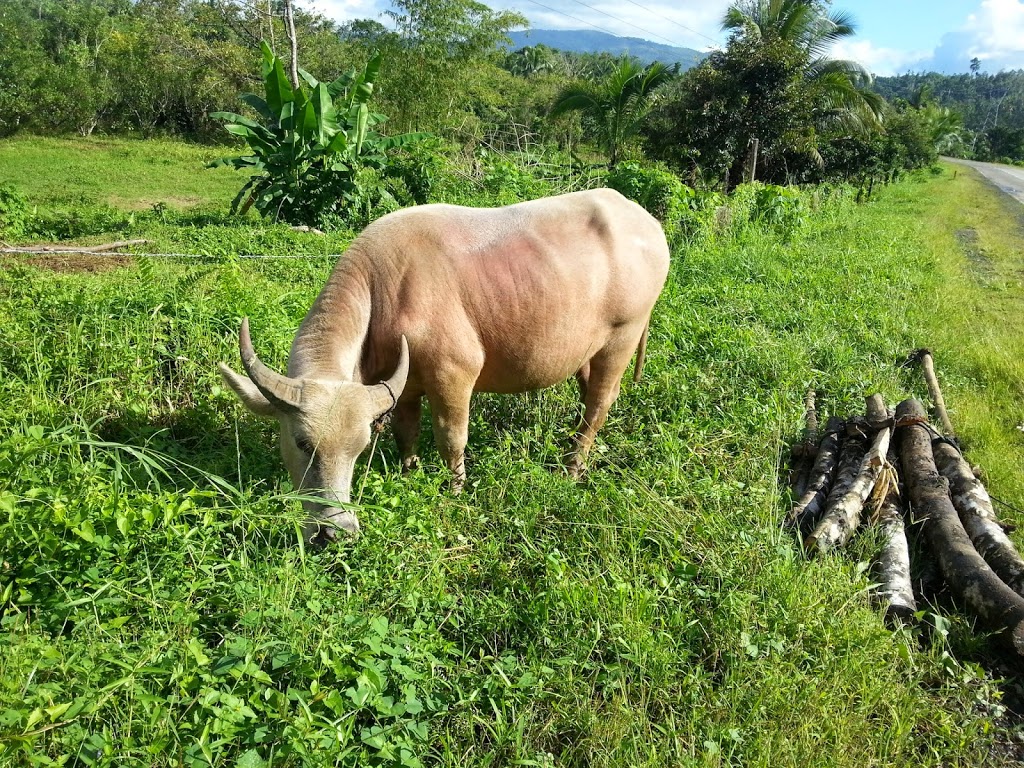
If you grew up in the province like I did, you probably know what it’s like to see a carabao up close — the way it moves slowly but powerfully, the sound of its hooves sinking into wet soil, the calm in its dark, soulful eyes.
For many Filipino families, the carabao isn’t just a work animal.
It’s part of the family.
In our home, carabaos have always been there — long before machines and motorcycles took over the fields.
They helped us plow the land, carried our loads, and stood quietly beside us through planting and harvest.
And like any family member, they’ve given us both joy and heartbreak.
Recently, we had to let go of our old female carabao. She’d been with us for years — strong, patient, and gentle.
But age caught up with her and she suffered a nose injury that made it hard for her to breathe and eat as well as cooperate. We did what we could, but eventually, we had to make the difficult decision to let her go.

We tried swapping her with a young bull, hoping to raise him as our new farm helper. But that didn’t work out the way we hoped.
He was restless, easily startled, and not yet accustomed to the steady rhythm of farm work.
It made us realize something simple but true — that every carabao, like every person, has its own personality, patience, and way of learning.
The Carabao: A True Filipino Icon
Scientifically known as Bubalus bubalis, the carabao (or water buffalo) has been with us for centuries. It’s a domesticated type of swamp buffalo, perfectly suited to the Philippines’ wet fields and humid climate.
The earliest records suggest they’ve been in our islands for thousands of years — long before tractors and trucks existed.
A full-grown adult carabao can weigh between 250 to 500 kilograms and stand up to 1.2 meters tall at the shoulder. Males are larger and heavier, while females tend to be gentler and easier to train. With proper care, a carabao can live for 20 to 25 years, sometimes even longer if it’s not overworked.
When treated right, a carabao will work with you, not against you. They’re incredibly loyal once they trust you. Farmers often start training them young — teaching them how to follow commands, pull plows, and walk calmly beside a handler.
They’re known for their strength and endurance. One carabao can pull plows, carts, and heavy loads that even a small truck might struggle with — yet it does so calmly, without any fuss.
Work should be balanced with rest. Overworking a carabao leads to exhaustion and health issues, so it’s important to give them regular breaks, plenty of water, and days off between heavy workloads.
Carabaos also need companionship. They’re social animals, so having another carabao nearby — or even goats and cows — helps them stay calm and happy. Our carabao used to hang out with the goat.

They would just lie there for hours chewing cud. She in the mud while the goat on grass.
How to Take Care of Carabaos
Whether they’re raised for work, milk, or companionship, carabaos deserve proper care and respect. Here are some essentials we’ve learned over the years:
- Proper Shelter.
Carabaos need a shaded, airy area to rest. A simple shed with a roof and open sides is enough. They love to wallow in mud or ponds, especially during the dry months, to keep cool and protect their skin from insects. - Good Nutrition.
Carabaos are herbivores that thrive on grass, rice straw, corn stalks, and other crop residues. You can supplement their diet with salt licks and mineral blocks to help them stay strong and healthy. Always provide clean drinking water — they drink a lot! - Clean Environment.
Regularly clean their resting area to prevent flies and infections. If they have access to a pond or mud pit, make sure it’s not stagnant or contaminated. Our neighbors would love why we kept digging up new wallowing pits for our carabao every other month. They did not know that it was for health reasons. - Gentle Handling.
Carabaos respond best to kindness and consistency. They remember their handlers, voices, and even daily routines. Yelling or forcing them doesn’t work — patience does. I learned early on tha a firm hand and a quiet mouth was more effective with a carabao than shouting. That’s a life lesson I still use today in my daily life.
Basic Healthcare for Carabaos
Like people, carabaos get sick too — and most of their illnesses are preventable with regular care.
- Vaccination: Work with your local agricultural office or the Philippine Carabao Center (PCC) for scheduled vaccinations against common diseases such as hemorrhagic septicemia and blackleg.
- Deworming: Every few months, carabaos should be dewormed to prevent parasites that cause weight loss and weakness.
- Hoof and Skin Care: Working in muddy fields can cause infections, so clean their hooves regularly. You can also bathe them to remove dirt and keep their skin healthy. Our carabao enjoyed regular hosing with slightly stronger pressure. Maybe it felt like she was getting a a massage.
- Monitoring: Watch out for signs of illness — loss of appetite, drooling, nasal discharge, or sluggishness. Early treatment always makes a difference.
A healthy carabao isn’t just stronger; it’s happier, more cooperative, and easier to train.
Carabaos as Pets and Family Members
Interestingly, there’s a growing number of Filipinos who keep carabaos not just for farming, but as pets or companions. In rural communities, children often grow up alongside these animals, learning respect and empathy through caretaking.
As kids, we grew up naming them, talking to them, and even riding on their backs to the fields. They respond with trust, affection, and patience.

A pet carabao is docile and affectionate when treated kindly. They recognize faces, respond to names, and can even show excitement when their owners come near.
Some will even go as far as nudge your arm for attention.
They may be big, but they have gentle souls.
Of course, their size and strength mean they should still be handled with care, especially around small children.
Keeping a carabao as a pet means committing to its care — feeding, cleaning, giving space to roam, and showing daily affection. It’s not much different from caring for a dog or a horse, except that your “pet” weighs half a ton and can pull a plow.
When I think of our old female carabao, I don’t just remember the work she did — I remember her calm presence, the way she’d look at us when we brought her feed, or how she’d rest quietly under the mango tree after a long day.
Losing her felt like losing a part of the family. And it reminded me that the bond between people and animals runs deeper than just need or utility. It’s about respect, companionship, and gratitude.
PS – Albino Carabaos and What They Symbolize

In Filipino folklore, albino carabaos are considered symbols of luck, purity, and prosperity. Some old stories even say that seeing one brings blessings to the harvest or foretells a season of abundance. They’re beautiful creatures — pale, gentle, and even more sensitive to sunlight than regular carabaos, which means they need extra shade and care. Seeing one in person feels almost like spotting a myth come to life.
I wrote about my first encounter with one and missing out on the opportunity to take a picture. And after a few years, finally got the opportunity to take a picture.


